Hola amigos: A VUELO DE UN QUINDE EL BLOG., hemos recibido información de la Fundación Nacional de Ciencias de Los Estados Unidos, sobre el desastre del terremoto que sucedió 25 de abril en Nepal.
NSF, nos dice: "Los Himalayas: Estos picos que prohíben en el sur de Asia, que llegan a más de 29.000 pies e incluyen el Monte Everest, marque una de las cordilleras más jóvenes de la Tierra. También señalan la ubicación de una región sísmica activa, como el pueblo de Nepal fueron testigos el 25 de abril.
Ese día, un terremoto en Nepal se cobró más de 8.800 vidas humanas e hirió a cerca de 23.000 personas. Era una magnitud 7.8 terremoto que dejó a cientos de miles sin hogar y pueblos enteros aplanados."
Ese día, un terremoto en Nepal se cobró más de 8.800 vidas humanas e hirió a cerca de 23.000 personas. Era una magnitud 7.8 terremoto que dejó a cientos de miles sin hogar y pueblos enteros aplanados."
More infomation....
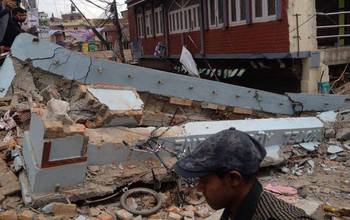 Credit and Larger Version |
August 3, 2015
The Himalayas: These forbidding peaks in South Asia, which reach more than 29,000 feet and include Mount Everest, mark one of Earth's youngest mountain ranges. They also signal the location of an active seismic region, as the people of Nepal witnessed on April 25.
On that day, an earthquake in Nepal claimed more than 8,800 human lives and injured nearly 23,000 people. It was a magnitude 7.8 quake that left hundreds of thousands homeless and entire villages flattened.
What led to the quake, and when and where is Nepal's next one likely to occur? How can people recover more quickly from future earthquakes?
To help find answers, the National Science Foundation (NSF) has funded RAPID--or rapid response--awards for scientists and engineers studying events tied to the earthquake. NSF's Directorate for Geosciences has awarded approximately $480,000; its Directorate for Engineering $280,000.
RAPID awards are given for research that requires urgent access to data, facilities or specialized equipment, such as obtaining seismic measurements following a major quake.
"We are all shocked by the devastation caused by the Nepal earthquake," says Roger Wakimoto, NSF Assistant Director for Geosciences. "The NSF RAPID awards provide an opportunity to increase our fundamental understanding of earthquakes. The knowledge gained by the research conducted through these awards may ultimately improve society's resilience to natural disasters."
Understanding the causes
For Nepal, it all comes down to plate tectonics. The collision of the Indian plate with the Asian plate makes the region seismically active, which leads to earthquakes like the one in April.
To peer into Earth's inner workings beneath the Himalayas, scientists receiving NSF Nepal rapid response grants will conduct research on subjects including landslides caused by the earthquake--from immediate hazards to tectonic drivers; as well as the aftershock seismicity that followed the quake; and the fault geometry and time-dependent stress changes that are an integral part of how quakes such as Nepal's occur.
For example, Rebecca Bendick of the University of Colorado and Roger Bilham of the University of Montana are measuring post-seismic displacements. They plan to install two arrays of GPS units along the 21-mile expanse between Nepal's capital, Kathmandu, and the country's southern border. They hope to gain new insights into the region's tectonics.
More resilient infrastructure
The April earthquake, also known as the Gorkha quake, and its aftershocks caused widespread structural damage and infrastructure failures. Many of the devastated buildings and systems are similar in design to those in the U.S. and elsewhere, and have the same risks and vulnerabilities, such as cascading failures.
"Studying the damage to this structural system and the challenges to disaster management will help us better understand the vulnerabilities of similar systems, particularly those in California," says Pramod Khargonekar, NSF Assistant Director for Engineering. "With more data to inform more resilient designs, engineering advances can enable infrastructure to better withstand future hazards and to bounce back faster with minimal loss."
To strengthen disaster recovery, NSF-funded researchers will investigate ways to improve damage assessment, post-disaster logistics, and coordination of relief efforts.
The data collected in Nepal will inform the broader disaster research community.
NSF works closely with other government agencies to share information via the National Earthquake Hazards Reduction Program and the Learning from Earthquakes Program, which have extensive data archives and support scientists poised to respond to natural hazards.
Researchers with the Geotechnical Extreme Events Reconnaissance Association, which also receives NSF support, were among the first U.S. scientific teams on the scene in Nepal.
NSF Rapid Response Grant Awardees: Nepal Earthquake
Andre Barbosa and Michael Olsen, Oregon State University: RAPID/Collaborative Research: Post-Disaster, Reinforced Concrete Building Performance Data Collection following the April 25, 2015 Nepal Earthquake
Rebecca Bendick, University of Montana: Collaborative Research: The Nepal Earthquake and Limits on Moment, Fault Geometry and Time-Dependent Stress Changes
Roger Bilham, University of Colorado, Boulder: Collaborative Research: The Nepal Earthquake and Limits on Moment, Fault Geometry and Time Dependent Stress Changes
Marin Clark, University of Michigan: RAPID Collaborative Research: Landslides caused by the April 2015 Nepal earthquakes, from immediate hazard to tectonic driver
Abhijit Ghosh, University of California, Riverside: Collaborative Research: Rapid Response to the Mw 7.9 Earthquake of April 25, 2015 in Nepal
Jose Holguin-Veras, Rensselaer Polytechnic Institute: RAPID: Field Investigation on the Socio-Technical Features of Post-Disaster Response Logistics in the Aftermath of the Nepal Earthquake
Marianne Karplus, University of Texas, El Paso: RAPID: Collaborative Research: Nepal Array Measuring Aftershock Seismicity Trailing Earthquake
Simon Klemperer, Stanford University: RAPID: Collaborative Research: Nepal Array Measuring Aftershock Seismicity Trailing Earthquake
Ali Mostafavi, Nazife Ganapati and Nipesh Pradhananga, Florida International University: RAPID: Assessment of Cascading Failures and Collective Recovery of Interdependent Critical Infrastructure in Catastrophic Disasters: A Study of 2015 Earthquake in Nepal
John Nabelek, Oregon State University: Collaborative Research: Rapid Response to the Mw 7.9 Earthquake of April 25, 2015 in Nepal
Bimal Paul, Kansas State University: Contribution of Linking Networks in Nepalese Earthquake Response: A Case Study
Andreas Stavridis, State University of New York at Buffalo: RAPID/Collaborative Research: Post-Disaster, Reinforced Concrete Building Performance Data Collection following the April 25, 2015 Nepal Earthquake
A. Joshua West, University of Southern California: RAPID Collaborative Research: Landslides caused by the April 2015 Nepal earthquakes, from immediate hazard to tectonic driver
-NSF-
Media Contacts Cheryl Dybas, NSF/Geosciences, (703) 292-7734, cdybas@nsf.gov
Sarah Bates, NSF/Engineering, (703) 292-7738, sbates@nsf.gov
Sarah Bates, NSF/Engineering, (703) 292-7738, sbates@nsf.gov
Related WebsitesNSF News: Chile Earthquake: NSF Awards Rapid Response Research Grants:
https://www.nsf.gov/news/news_summ.jsp?cntn_id=116870
NSF News: Drop! Cover! Hold On! "ShakeOut" Earthquake Drills:
NSF News: Drop! Cover! Hold On! "ShakeOut" Earthquake Drills:
http://www.nsf.gov/news/news_summ.jsp?cntn_id=122002
Nepal Earthquake Clearinghouse: http://www.eqclearinghouse.org/2015-04-25-nepal/
Geotechnical Extreme Events Reconnaissance: http://geerassociation.org/
NSF Special Report: Life Savers: Resilient Designs to Hazards:
Nepal Earthquake Clearinghouse: http://www.eqclearinghouse.org/2015-04-25-nepal/
Geotechnical Extreme Events Reconnaissance: http://geerassociation.org/
NSF Special Report: Life Savers: Resilient Designs to Hazards:
http://www.nsf.gov/eng/special/lifesavers/
NSF News: Scientists Return to Haiti to Assess Possibility of Another Major Quake:
NSF News: Scientists Return to Haiti to Assess Possibility of Another Major Quake:
The National Science Foundation (NSF) is an independent federal agency that supports fundamental research and education across all fields of science and engineering. In fiscal year (FY) 2015, its budget is $7.3 billion. NSF funds reach all 50 states through grants to nearly 2,000 colleges, universities and other institutions. Each year, NSF receives about 48,000 competitive proposals for funding, and makes about 11,000 new funding awards. NSF also awards about $626 million in professional and service contracts yearly.
Useful NSF Web Sites:
NSF Home Page: http://www.nsf.gov
NSF News: http://www.nsf.gov/news/
For the News Media: http://www.nsf.gov/news/newsroom.jsp
Science and Engineering Statistics: http://www.nsf.gov/statistics/
Awards Searches: http://www.nsf.gov/awardsearch/
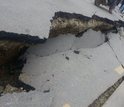
The Nepal quake claimed more than 8,800 human lives, and injured nearly 23,000 people.
Credit and Larger Version
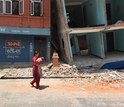
NSF-supported researchers were among the first U.S. scientific teams on the scene after the quake.
Credit and Larger Version
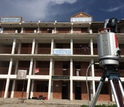
Data from Nepal will inform global disaster research. Shown here: Quake damage to a school building.
Credit and Larger Version
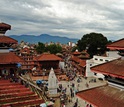
Durbar Square in Kathmandu, before the earthquake.
Credit and Larger Version
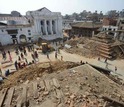
Durbar Square in Kathmandu, after the quake.
Credit and Larger Versión
The National Science Foundation (NSF)
Guillermo Gonzalo Sánchez Achutegui
ayabaca@gmail.com
ayabaca@hotmail.com
ayabaca@yahoo.com
Inscríbete en el Foro del blog y participa : A Vuelo De Un Quinde - El Foro!

No hay comentarios:
Publicar un comentario